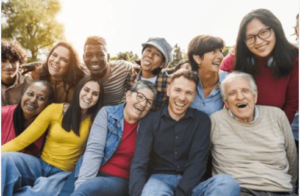
In a recent keynote presentation, I facilitated a group exercise. One diverse group of attendees highlighted sitcoms as a way to differentiate the generations. I thought this was an amazing way to show the evolution of our generations. Think about your own influences from TV shows.
From the 1950s to the 2010s, sitcoms evolved significantly in response to changing tastes and cultural shifts. The 1950s, with shows like I Love Lucy and Leave It to Beaver, emphasized traditional family values and wholesome humor. The 1960s introduced more fantastical elements and social commentary with Bewitched and The Andy Griffith Show.
The 1970s, marked by All in the Family and MASH*, began to tackle more controversial social issues such as racism, sexism, and the Vietnam War, reflecting a society in upheaval.
The 1980s brought a mix of family-centered shows like The Cosby Show and workplace comedies like Cheers, focusing on both domestic and social spheres.
The 1990s, led by Seinfeld and Friends, shifted towards more character-driven, ensemble casts and often explored urban life and relationships with a sharper, more cynical humor. The 2000s saw a rise in single-camera formats and more diverse storytelling with shows like Scrubs and How I Met Your Mother, blending comedy with drama. By the 2010s, sitcoms like Modern Family and Parks and Recreation embraced a mockumentary style and more inclusive, diverse perspectives, reflecting a more interconnected, socially aware audience. This evolution highlights a broader societal shift towards

Recent Comments